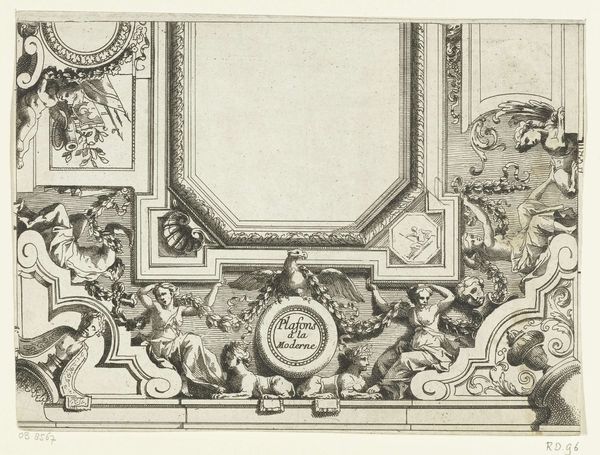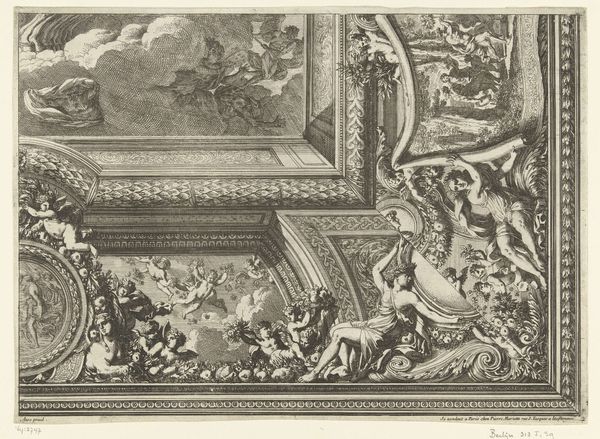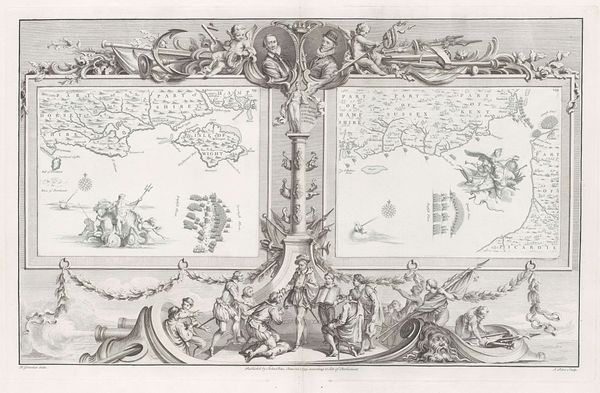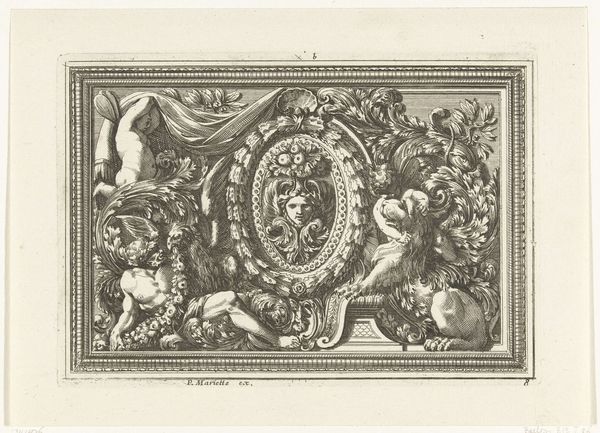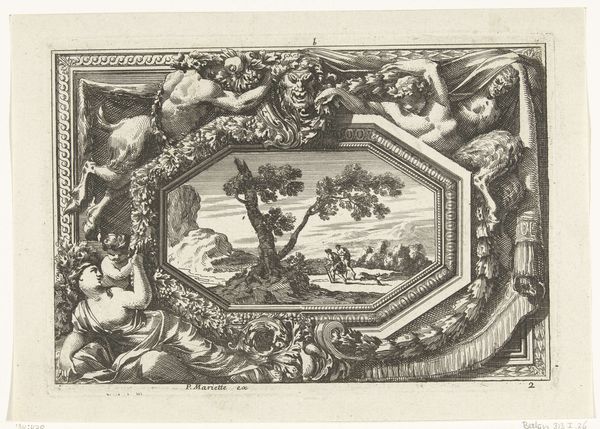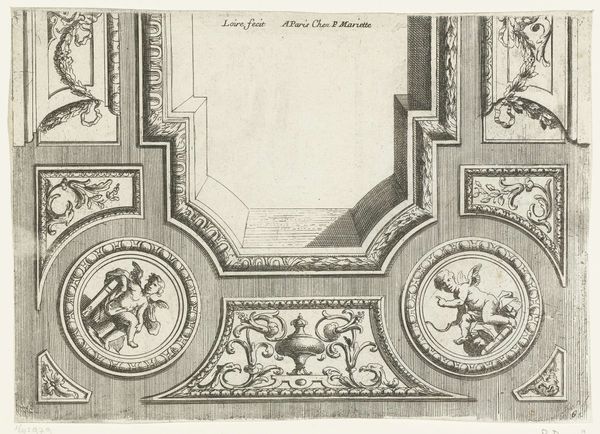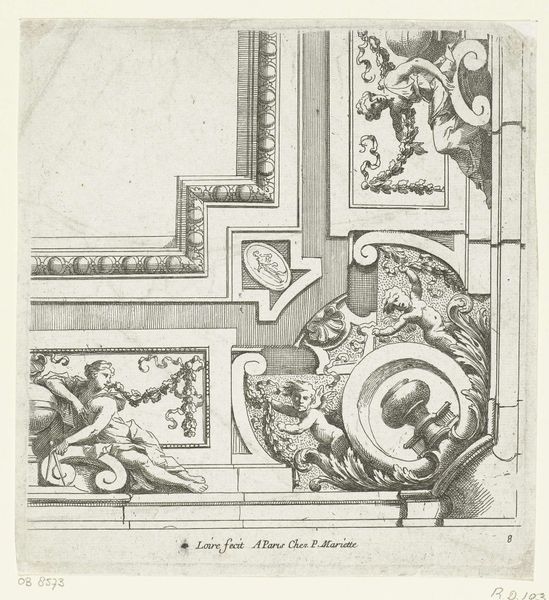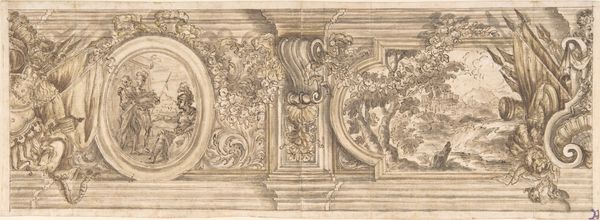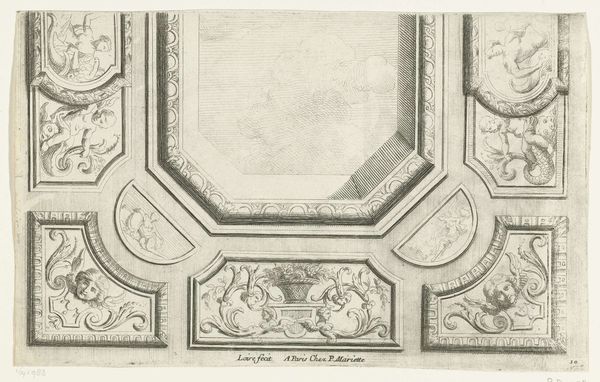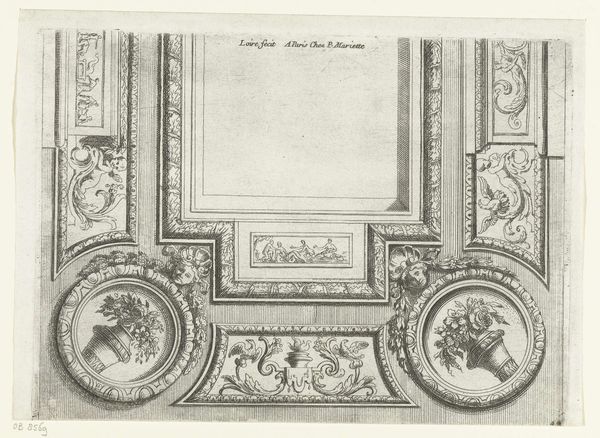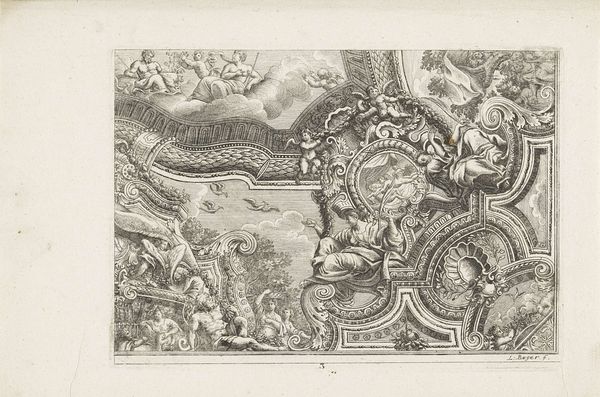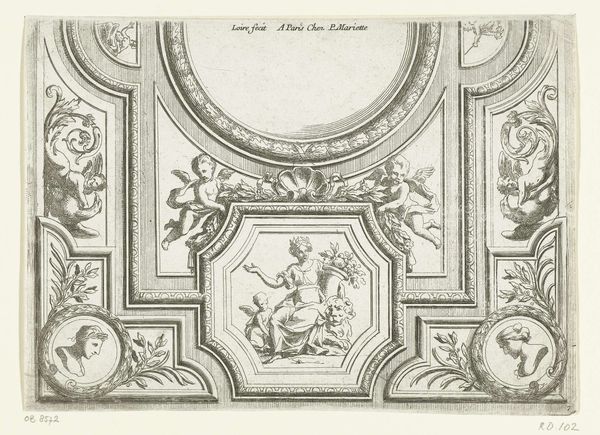
print, engraving
# print
#
pen illustration
#
pen sketch
#
landscape
#
figuration
#
line
#
history-painting
#
engraving
Dimensions: height 192 mm, width 239 mm, height 181 mm, width 238 mm, height 380 mm, width 618 mm
Copyright: Rijks Museum: Open Domain
Editor: Here we have "Kaarten van de Spaanse Armada (16 en 21 juli 1588)" or, "Maps of the Spanish Armada," thought to be created around 1739 by John Pine, using print and engraving. It feels very cartographic, unsurprisingly, but also celebratory, even boastful. What do you see in this piece? Curator: Well, I see more than just boastfulness. This print allows us to explore the very act of mapmaking as a form of production tied to imperial power. Think about the labor involved, from the surveyors and engravers to the distributors of these images. Consider the materiality of the print itself - paper, ink, and the printing press as technologies enabling the spread of a particular narrative about naval power and the defeat of the Armada. Editor: So, beyond just documenting a historical event, you are suggesting the work reveals production processes inherent to maintaining social hierarchies? Curator: Precisely! The artistic flourishes—the allegorical figures, the decorative weaponry—are not merely aesthetic; they're integral to constructing a heroic narrative. How does the relatively widespread access to such printed material reinforce England's national identity? The map is not just a representation of space but an active participant in constructing that space, imbued with political meaning and asserting dominance. How do we think this artwork operated in culture and what class status it could reflect? Editor: It's interesting to think of the consumption of this image. You know, that this wasn't just for the elite, but it circulated more widely due to printmaking... Curator: Exactly! This is key. By examining the materials, production and distribution, we see beyond the surface to understand its role in shaping perceptions and power dynamics in early modern Europe. The choice of print democratizes the image, which allows us to understand labor and materiality much easier. Editor: It certainly shifts my perspective, thinking about how it operated as an agent in its own time. Curator: And even our own time! I am always impressed how materiality can connect history with current conditions.
Comments
No comments
Be the first to comment and join the conversation on the ultimate creative platform.
